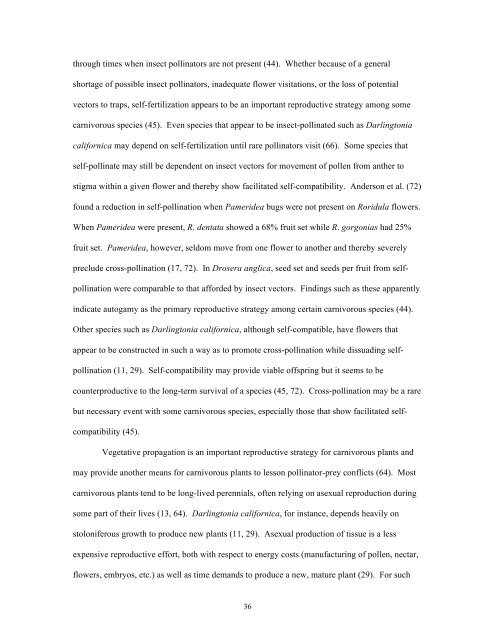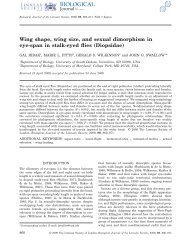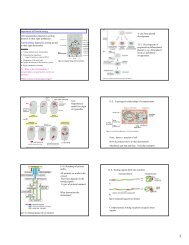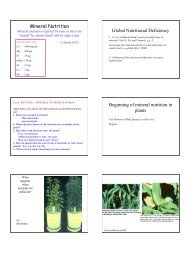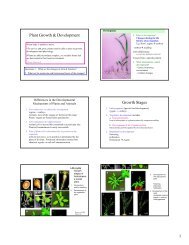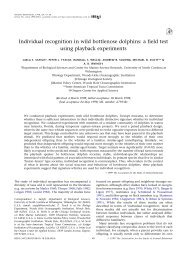Carnivorous Plants and Their Prey
Carnivorous Plants and Their Prey
Carnivorous Plants and Their Prey
You also want an ePaper? Increase the reach of your titles
YUMPU automatically turns print PDFs into web optimized ePapers that Google loves.
through times when insect pollinators are not present (44). Whether because of a general<br />
shortage of possible insect pollinators, inadequate flower visitations, or the loss of potential<br />
vectors to traps, self-fertilization appears to be an important reproductive strategy among some<br />
carnivorous species (45). Even species that appear to be insect-pollinated such as Darlingtonia<br />
californica may depend on self-fertilization until rare pollinators visit (66). Some species that<br />
self-pollinate may still be dependent on insect vectors for movement of pollen from anther to<br />
stigma within a given flower <strong>and</strong> thereby show facilitated self-compatibility. Anderson et al. (72)<br />
found a reduction in self-pollination when Pameridea bugs were not present on Roridula flowers.<br />
When Pameridea were present, R. dentata showed a 68% fruit set while R. gorgonias had 25%<br />
fruit set. Pameridea, however, seldom move from one flower to another <strong>and</strong> thereby severely<br />
preclude cross-pollination (17, 72). In Drosera anglica, seed set <strong>and</strong> seeds per fruit from self-<br />
pollination were comparable to that afforded by insect vectors. Findings such as these apparently<br />
indicate autogamy as the primary reproductive strategy among certain carnivorous species (44).<br />
Other species such as Darlingtonia californica, although self-compatible, have flowers that<br />
appear to be constructed in such a way as to promote cross-pollination while dissuading self-<br />
pollination (11, 29). Self-compatibility may provide viable offspring but it seems to be<br />
counterproductive to the long-term survival of a species (45, 72). Cross-pollination may be a rare<br />
but necessary event with some carnivorous species, especially those that show facilitated self-<br />
compatibility (45).<br />
Vegetative propagation is an important reproductive strategy for carnivorous plants <strong>and</strong><br />
may provide another means for carnivorous plants to lesson pollinator-prey conflicts (64). Most<br />
carnivorous plants tend to be long-lived perennials, often relying on asexual reproduction during<br />
some part of their lives (13, 64). Darlingtonia californica, for instance, depends heavily on<br />
stoloniferous growth to produce new plants (11, 29). Asexual production of tissue is a less<br />
expensive reproductive effort, both with respect to energy costs (manufacturing of pollen, nectar,<br />
flowers, embryos, etc.) as well as time dem<strong>and</strong>s to produce a new, mature plant (29). For such<br />
36


